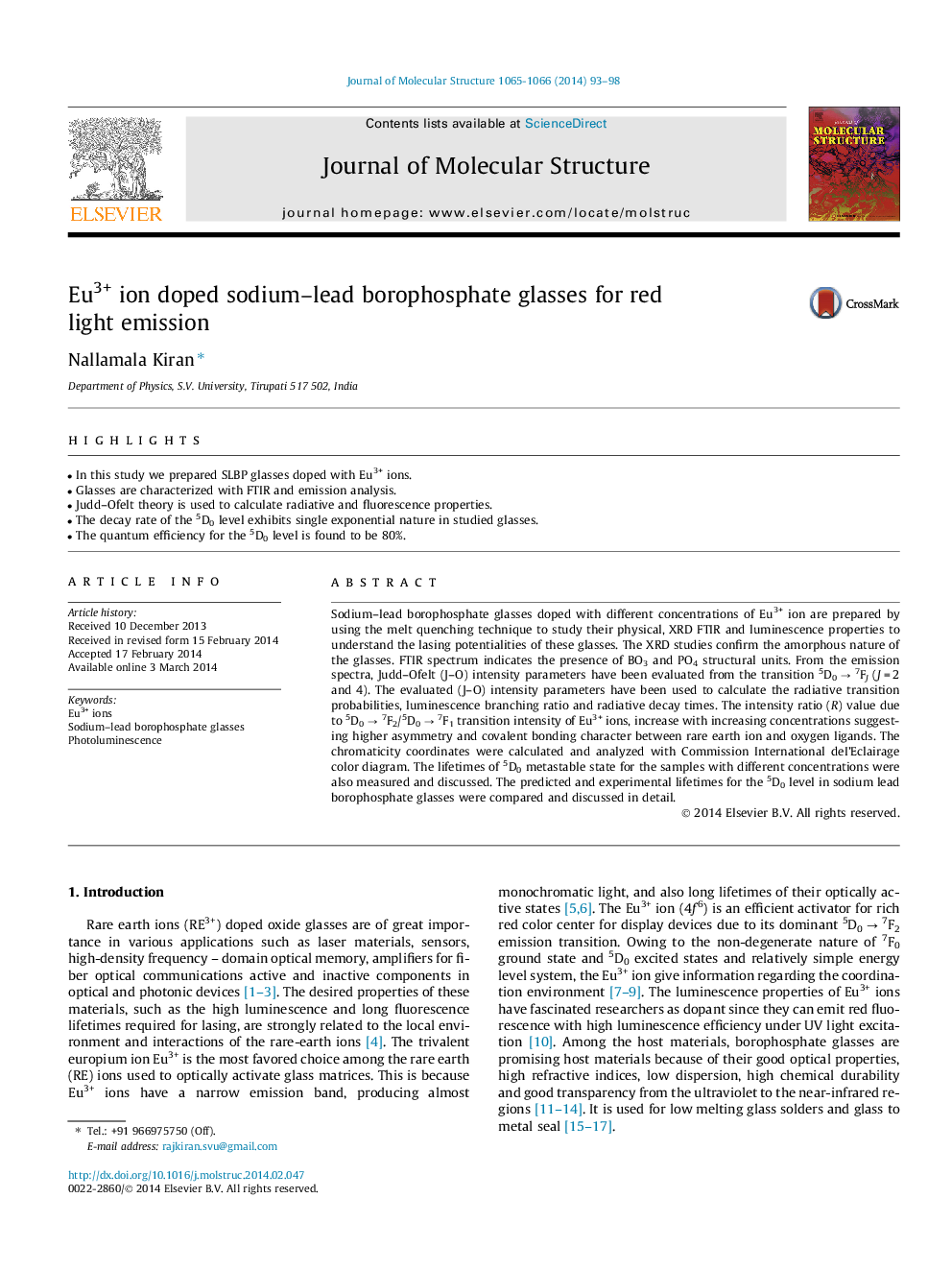| Article ID | Journal | Published Year | Pages | File Type |
|---|---|---|---|---|
| 1409340 | Journal of Molecular Structure | 2014 | 6 Pages |
•In this study we prepared SLBP glasses doped with Eu3+ ions.•Glasses are characterized with FTIR and emission analysis.•Judd–Ofelt theory is used to calculate radiative and fluorescence properties.•The decay rate of the 5D0 level exhibits single exponential nature in studied glasses.•The quantum efficiency for the 5D0 level is found to be 80%.
Sodium–lead borophosphate glasses doped with different concentrations of Eu3+ ion are prepared by using the melt quenching technique to study their physical, XRD FTIR and luminescence properties to understand the lasing potentialities of these glasses. The XRD studies confirm the amorphous nature of the glasses. FTIR spectrum indicates the presence of BO3 and PO4 structural units. From the emission spectra, Judd–Ofelt (J–O) intensity parameters have been evaluated from the transition 5D0 → 7FJ (J = 2 and 4). The evaluated (J–O) intensity parameters have been used to calculate the radiative transition probabilities, luminescence branching ratio and radiative decay times. The intensity ratio (R) value due to 5D0 → 7F2/5D0 → 7F1 transition intensity of Eu3+ ions, increase with increasing concentrations suggesting higher asymmetry and covalent bonding character between rare earth ion and oxygen ligands. The chromaticity coordinates were calculated and analyzed with Commission International deI’Eclairage color diagram. The lifetimes of 5D0 metastable state for the samples with different concentrations were also measured and discussed. The predicted and experimental lifetimes for the 5D0 level in sodium lead borophosphate glasses were compared and discussed in detail.
